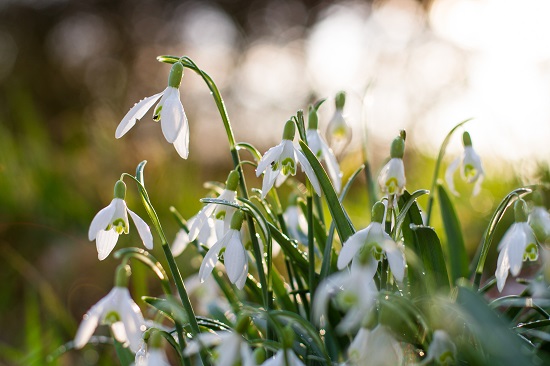News
Head outdoors to look for first signs of spring
- Details
- 01 December 2023
The Field Studies Council and the Royal Society of Biology have teamed up to create a new interactive project which will allow nature lovers across the country to chart the arrival of the new season.

That first snowdrop, a tiny bud on a tree or a dragonfly whizzing past are all signs that spring is on the way. The Signs of Spring survey will launch in the New Year and will encourage people to spot and record when they see particular signs of spring in nature, like new frogspawn in ponds and daffodils emerging from the ground.
The survey is open to all, and there will be a live map to chart the responses of people around the country for everyone to track.
Amy Bandaranayake, the Field Studies Council’s digital learning officer, who is leading the project, said: “Everyone looks forward to spring, when the first signs of new life help lift the darkness of the winter months. There are so many early signs to look out for, and we hope lots of people will enjoy getting involved in our survey.
“It will be interesting to see how things are progressing around the country as contributors enter their survey data – we wonder where the first snowdrop will show its head this year?”
Susie Rabin, Associate Director of Communications and Public Affairs at RSB, said: “There is nothing better on a crisp, cold day in January or February than pulling on warm clothes and heading out into the fresh air. Even when the ground is hard with frost or covered in snow, there will be telltale signs to show that spring is on the way.
“It’s great to be able to work with the Field Studies Council on the survey and the live map. Getting people out to enjoy nature and the environment is very much part of the ethos of both organisations, and we look forward to seeing what this year’s survey shows us about the biology of the UK in springtime.”
Starting on Friday 5th January and continuing throughout the early months of the year, the survey will be asking people to record evidence of 10 different signs of spring while they are out and about: bluebells, bumblebees, butterflies, daffodils, damselflies and dragonflies, frog spawn, hazel catkins, ladybirds, snowdrops and the first cut of the lawn.
The data received will feed into a website which will update findings around the country as they arrive. Once complete, it is hoped this set of UK-wide biological records will be combined with results from future surveys and used to help monitor the impacts of climate change on nature.
As well as recording each of the signs of spring, those taking part will be asked for information about the weather conditions and time of day to make sure the information is as complete as possible.
Amy added: “The results of the survey will give us valuable information about the signs of spring. By collecting data over a number of years we hope to build a picture of the effects climate change might be having on the environment and individual species.
“It’s also a great excuse to wrap up warm and get out into nature, so we’re looking forward to lots of people taking part in this citizen science project.”
For more information about the survey visit our Signs of Spring survey webpage.

